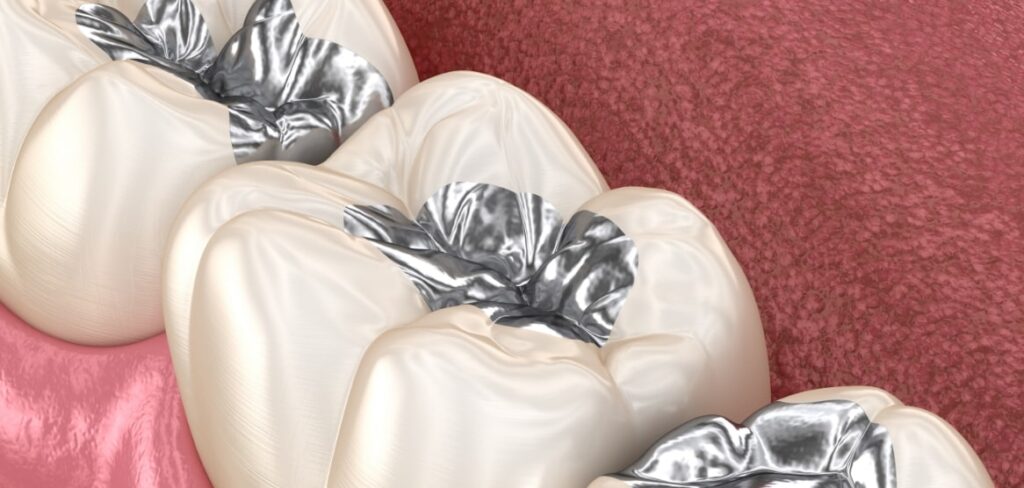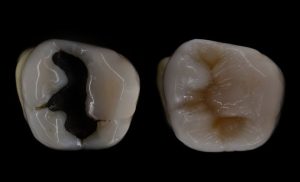Dental amalgam (silver filling) is a dental filling material, that has been widely used since the 1800s to fill cavities, caused by tooth decay.
The components of dental amalgam are a powdered alloy composed of silver, tin and copper and a liquid part that is made of mercury. Approximately half (50%) of dental amalgam is elemental mercury, which reacts with and binds together the silver/copper/tin alloy particles to form an amalgam.
For a long time, amalgam was considered the best and strongest material for dental restorations. However, recent studies have shown that the release of mercury from these fillings can be significant and potentially cause health issues, especially in high-risk individuals.
In September 2020, the FDA advised that pregnant women, patients with multiple sclerosis, Alzheimer’s disease, and Parkinson’s disease are considered high-risk for amalgam fillings and should avoid getting them “whenever possible and appropriate”.
A recent study published in June 2o22 by Human and Experimental Toxicology showed that urinary amounts of mercury were almost two times higher in adults with at least one amalgam filling, compared to those with no amalgam fillings.
Mercury vapor is known to be released from dental amalgam fillings at higher rates during brushing, cleaning, clenching of teeth and chewing.
Different types of mercury
The mercury used for amalgam fillings is a form of elemental mercury, that releases mercury vapor, which is mainly absorbed by the lungs
The mercury found in fish is methylmercury, a type of organic mercury, which is mainly absorbed through the digestive tract.
These forms of mercury are processed by the body in different ways and the human body have different levels of tolerance for them. Some recent studies show that these two types of mercury can transform into each other in the body, making it difficult to distinguish between their potential health effects. Much of the mercury is eliminated, but part of it can accumulate in the bodily fluids and tissues, including the kidneys and brain, increasing the mercury levels in the body (bioaccumulation).
Replacing amalgam fillings
With the advances in dental technology and materials, amalgam fillings are becoming “something from the past”. In 2008, the use of amalgam was banned in Sweden, Denmark and Norway, after much discussion about the health and environmental risks of mercury.
There are different options of dental materials available nowadays, that are superior to amalgam in terms of strength, aesthetics and biocompatibility. Composite resin and porcelain are the materials of choice to replace amalgam fillings, which should always be done in a safe way, with a qualified practitioner.







